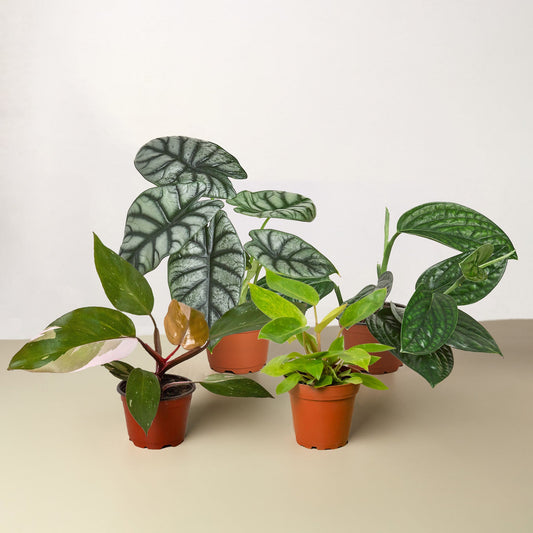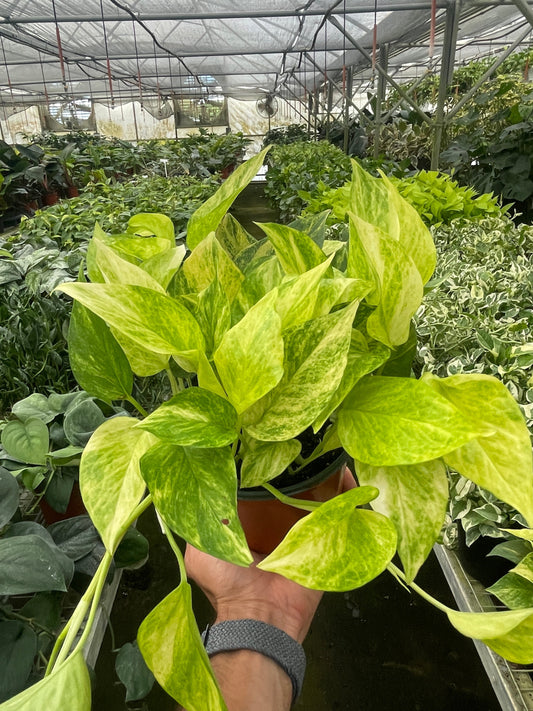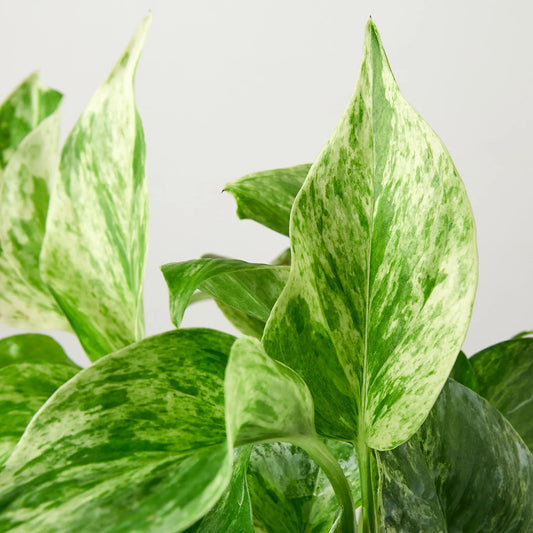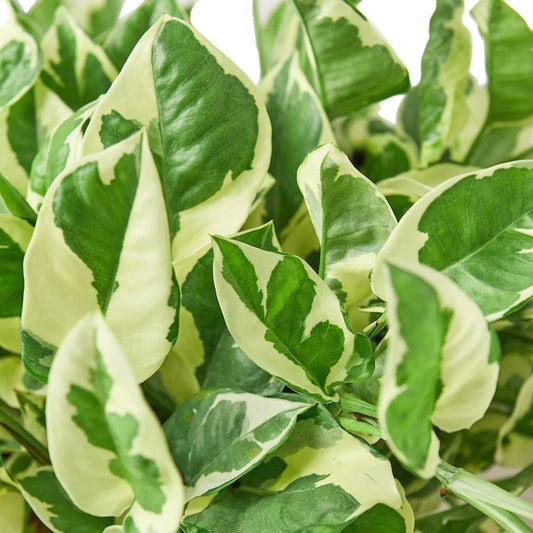Broadleaf Lady Palm Aerial Roots: Everything You Need to Know
Cafe Planta Team
Have you ever noticed those curious little roots popping out of your Broadleaf Lady Palm, reaching for the air? If you’re anything like me, the first time you saw these aerial roots, you probably wondered what they were up to. Are they a problem, or are they just nature being quirky?
In this post, we're going to pull back the curtain on these fascinating features of the Broadleaf Lady Palm. We’ll cover everything from what aerial roots are, why they appear, and how they can affect your plant's health. Plus, we’ll dive into practical tips for caring for these roots and how they can even add a unique touch to your home decor.
What Are Aerial Roots?
Let’s start with the basics: what exactly are aerial roots? Unlike the roots we’re used to seeing, which grow underground and anchor the plant, aerial roots grow above the soil. They shoot out from the plant's stem or trunk, reaching out into the air.
Aerial roots have a few jobs. They can help the plant absorb moisture from the air, support the plant structurally, and even assist in nutrient absorption in some cases. For the Broadleaf Lady Palm, these roots aren't just a quirky feature—they're an adaptation to help the plant thrive in its natural environment.
In the wild, the Broadleaf Lady Palm grows in humid, forested areas. The aerial roots help them capture moisture from the air, which is pretty neat if you think about it. So, if you see these roots on your plant, there’s no need to panic. They're just doing what comes naturally.
Why Do Broadleaf Lady Palms Develop Aerial Roots?
Broadleaf Lady Palms develop aerial roots primarily as a survival mechanism. These roots help them adapt to their native environments, where they might not always have access to water through the soil. But why exactly do they appear on your houseplant?
Here are a few reasons:
- Humidity: In high-humidity environments, aerial roots can absorb moisture. If your home is on the humid side, you might see more of these roots.
- Structural Support: In nature, these roots can help stabilize the plant. While not as necessary indoors, your plant doesn’t know that and will grow them anyway.
- Nutrient Absorption: Sometimes, aerial roots can help gather nutrients from the air or the surface they're growing on. This isn't as common indoors, but it can happen.
So, if your Broadleaf Lady Palm starts sprouting aerial roots, it’s just responding to its environment. It’s a reminder that plants have their own ways of adapting and thriving, even in our living rooms.
Are Aerial Roots a Sign of Trouble?
The appearance of aerial roots on your Broadleaf Lady Palm isn’t usually a sign of trouble. In fact, it’s often quite the opposite. These roots can indicate that your plant is healthy and responding well to its environment.
However, there are a few cases where aerial roots might be a sign of something else:
- Humidity Levels: If your plant is putting out a lot of aerial roots, it might be indicating that it wants more humidity. Consider using a humidifier if your home is particularly dry.
- Overcrowding: If the plant seems cramped, it might shoot out aerial roots in search of more space and resources.
- Light Conditions: Aerial roots can sometimes appear when a plant is reaching for more light. Check if your plant is getting enough natural sunlight.
Most of the time, aerial roots are just your plant doing its thing. But it’s always good to check on the overall health of your plant if you notice any changes.
How to Care for Aerial Roots
Now that you’ve spotted those aerial roots, how do you care for them? Luckily, they don’t need much special attention, but here are some tips to keep them healthy:
- Humidity: If possible, maintain a higher humidity level around your plant. This can be done by misting the plant or using a humidifier.
- Environment: Make sure your plant is not too cramped. Giving it space can help prevent unnecessary stress and promotes healthy growth.
- Pruning: If the roots become unruly or are growing in unwanted directions, you can trim them back. Just be gentle and use clean, sharp scissors.
- Feeding: Ensure your plant is well-fed. A balanced, water-soluble fertilizer can give your plant the nutrients it needs to support both regular and aerial roots.
By focusing on these simple care tips, your Broadleaf Lady Palm can continue to thrive, and those aerial roots will happily coexist with the rest of your plant.
Incorporating Aerial Roots into Your Home Decor
One of the coolest things about aerial roots is that they can add a unique touch to your home decor. Instead of seeing them as an oddity, why not embrace them as a natural design element?
Here are some creative ways to incorporate aerial roots into your home’s decor:
- Display Stands: Use a plant stand to elevate your Broadleaf Lady Palm, allowing the aerial roots to dangle naturally. This can create an eye-catching, cascading effect.
- Hanging Planters: If your plant is smaller, consider using a hanging planter. The aerial roots can add an interesting texture and depth to the hanging display.
- Group Plantings: Place your palm among other plants with visible roots or vines. The combination can create a lush, jungle-like atmosphere.
- Natural Frames: Use a decorative frame or trellis to guide the aerial roots. This can make them a focal point, adding an artistic element to your space.
With a little creativity, those aerial roots can become a stunning part of your home’s design. They add a touch of the wild, natural world right into your living space.
Common Myths About Aerial Roots
Like many things in the plant world, aerial roots come with their fair share of myths and misconceptions. Let’s clear up a few of those misunderstandings:
- Myth 1: Aerial Roots Need to Be Cut Off. Some folks think aerial roots should be removed because they're unsightly or unnecessary. Not true! These roots are a natural part of the plant. They can be trimmed for aesthetic reasons, but they don't harm the plant.
- Myth 2: Aerial Roots Mean the Plant is Sick. Many people believe that aerial roots signal a problem. While they can indicate environmental changes, they’re usually a sign of a healthy, adapting plant.
- Myth 3: Aerial Roots Steal Nutrients from the Plant. This is another misconception. Aerial roots don’t take away from the plant’s health. They’re an extension of its ability to absorb moisture and nutrients.
By understanding these myths, plant lovers can appreciate aerial roots for what they are—an amazing adaptation of nature.
How Aerial Roots Can Affect Plant Growth
Aerial roots are more than just an interesting feature—they can actually influence how your Broadleaf Lady Palm grows. These roots can impact the plant’s health and development in several ways:
- Stability: In their natural environment, aerial roots help stabilize the plant. While less crucial indoors, they can still provide some support.
- Resource Gathering: Aerial roots can aid in resource gathering by absorbing moisture and nutrients from the air. This can support overall plant health.
- Growth Patterns: If the plant is searching for more light or space, aerial roots can influence its growth direction, potentially leading to a fuller, bushier plant.
It’s fascinating how these roots can play a role in the plant’s overall growth. Observing the changes in your plant can offer insights into how it’s adapting to its environment.
Creating the Ideal Environment for Your Broadleaf Lady Palm
To keep those aerial roots and your entire Broadleaf Lady Palm happy, creating the ideal environment is key. Here are some tips to ensure your plant thrives:
- Light: These palms prefer bright, indirect light. Direct sunlight can scorch the leaves, so find a spot with filtered light.
- Water: Keep the soil consistently moist but not waterlogged. Allow the top inch of soil to dry out between waterings.
- Temperature: Maintain a temperature range of 60-80°F (15-27°C). Avoid drafts or sudden temperature changes.
- Humidity: Higher humidity levels are ideal. Consider placing a humidifier nearby or grouping plants together to increase humidity.
By focusing on these conditions, you’ll help your Broadleaf Lady Palm thrive, aerial roots and all.
Practical Tips for New Plant Parents
If you’re new to the world of houseplants, caring for a Broadleaf Lady Palm might feel a bit daunting. But don’t worry—here are some practical tips to get you started:
- Start Small: If you’re new to plant care, begin with one or two plants to build your confidence.
- Observe: Spend time observing your plant. This helps you learn its preferences and spot any changes early.
- Ask for Help: Don’t hesitate to reach out to fellow plant people or online communities for advice.
- Be Patient: Plants take time to grow and adapt. Enjoy the journey and celebrate small successes.
Remember, every plant parent learns through experience. With time and attention, you’ll become more attuned to your plant’s needs.
Final Thoughts
Broadleaf Lady Palm aerial roots are a remarkable feature that reflects the plant's adaptability and resilience. By understanding their role, you can better appreciate their place in your plant's life and even use them to enhance your home decor.
At Cafe Planta, we're passionate about connecting people with the perfect plants for their homes. Whether you're seeking advice or looking to expand your plant collection, we're here to help. Feel free to reach out via email or connect with us on Instagram. We believe plants bring joy and connection, and we're excited to share that passion with you.



















